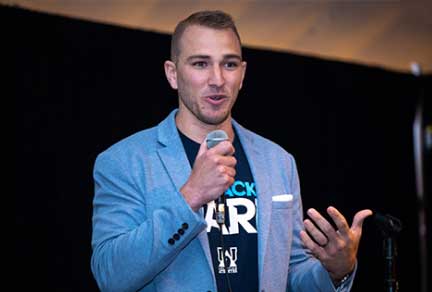FDA Inspections and Cleaning

Companies often have many questions concerning their approach to cleaning validation when it comes to preparing for an FDA Inspection. Often cleaning validation studies are extensively reviewed and assessed during FDA Inspections. How can you prepare your firm to be inspection ready when it comes to cleaning validation?
Below are some helpful questions to help you prepare and be ready for your next inspection.
What are the cGMP regulations regarding cleaning validation requirements?
Cleaning validation is a critical aspect of pharmaceutical manufacturing and required per the cGMPs 21 CFR 211.42 and 21 CFR 211.67. When designing and building of your manufacturing facility, companies should consider floor plans, flow of materials, type and build of equipment as well as people and employee operations when it comes to designing cleaning validation. These design reports should be available for review during your inspection.
Is your equipment shared dedicated or both?
Companies often question how to approach shared and or dedicated equipment processes. The cGMP regulations require equipment whether dedicated or multipurpose be cleaned and maintained as appropriate.
Equipment depending on types of products produced at your facility and whether shared or dedicated need to be sanitized and or sterilized to ensure there is no contamination or impact on the quality of the pharmaceutical products. Records of such cleaning activities are to be kept as part of cGMP requirements and available for inspection.
Manufactures should have robust cleaning procedures that are well defined, well documented and scientifically supported with cleaning validation studies. Thorough cleaning validation studies include the development of cleaning procedures by Research and Development groups, validation of cleaning procedures by Technical or Quality groups, training of employees and the application of Cleaning Processes by Operations and Manufacturing organizations.
Residues What are the Expectations?
Common areas of concern when approaching cleaning validation are ensuring residues are removed. For example, active ingredients and cleaning agents. Residues should be adequately removed from product contact surfaces of equipment. Types of equipment surfaces also should be examined and considered your cleaning validation studies.
For cleaning validation to be successful, the studies should ensure residues are effectively removed from product contact surfaces and test methods need to be proven effective. Additionally, equipment sampling procedures for swabbing and rinse samples should be approved by quality and the methods should be validated. Equipment should be as clean as can be reasonably achieved to a residue limit that is safe, causes no product quality concerns and leaves no visible residues.
Cleaning Validation and Continued Process Verification Stage 3:
As part of Guidance for Industry Process Validation: General Principles and Practices January 2011 Current Good Manufacturing Practices (CGMP) Revision 1, during Stage 3 ― Continued Process Verification, the equipment and facility qualification data should be assessed periodically to determine whether re-qualification should be performed and the extent of that re-qualification.
This relates also to cleaning validation studies for pharmaceutical equipment. For instance, if new products or equipment parts are added to existing manufacturing process, changes in formulations or cleaning agents, cleaning validation studies and procedures should be evaluated to determine the risk associated with such changes.
These changes should be documented and managed through the company’s change control management, risk assessments and as part of the company’s Quality System.
Conclusion
Cleaning Validation is an ongoing process and should be maintained throughout the Life Cycle of the Products and Facility Design.
References
Guidance for Industry Process Validation: General Principles and Practices January 2011 Current Good Manufacturing Practices (CGMP) Revision 1
FDA Questions and Answers on Current Good Manufacturing Practices -Equipment August 4, 2004
Review: The Review of American Pharmaceutical Business and Technology Volume 17 Issue 5 July/August 2014; Article How Clean is Clean in Drug Manufacturing? By Igor Gorsky; Accepted for publication 07/28/2014
21 CFR 211.42 Design and Construction Features
21 CFR 211.67 Equipment Cleaning and Maintenance
Related Insights
Blog
EU Biotech Act: Strategic considerations for biotech companies
Dec 22, 2025
Blog
CMC flexibilities in biological medicinal product development: The current EU perspective
Jan 12, 2024
Blog
Celebrating 40 Years of Rare Disease Progress: WODC Highlights
Jun 6, 2023
Blog
Population variability: important considerations in vaccine development
Jun 14, 2023
Whitepaper
How to prepare for Policy 0070: Challenges and opportunities for clinical data publication in the EU
Jun 28, 2023
Article
The technologies that are reshaping biotherapeutics manufacturing, an EU perspective
Jul 6, 2023
Blog
Ensuring future success in a new market by delivering a robust safety database solution
Aug 4, 2023
Whitepaper
Optimizing the Route to Regulatory Approval for a Novel Vaccine
Aug 18, 2023
Article
Australia: The Regulatory and Reimbursement Environment
Aug 28, 2023
Whitepaper
Scientific Validity Reports: a mandatory requirement for In Vitro Diagnostic Regulation (IVDR)
Sep 19, 2023
Blog
Assessing the need for comparative clinical trials in biosimilar development programs
Sep 21, 2023
Whitepaper
Advancing clinical development through innovative trial design
Nov 3, 2023
Related Insights
Blog
EU Biotech Act: Strategic considerations for biotech companies
Dec 22, 2025
Blog
CMC flexibilities in biological medicinal product development: The current EU perspective
Jan 12, 2024
Blog
Celebrating 40 Years of Rare Disease Progress: WODC Highlights
Jun 6, 2023
Blog
Population variability: important considerations in vaccine development
Jun 14, 2023
Whitepaper
How to prepare for Policy 0070: Challenges and opportunities for clinical data publication in the EU
Jun 28, 2023
Article
The technologies that are reshaping biotherapeutics manufacturing, an EU perspective
Jul 6, 2023
Blog
Ensuring future success in a new market by delivering a robust safety database solution
Aug 4, 2023
Whitepaper
Optimizing the Route to Regulatory Approval for a Novel Vaccine
Aug 18, 2023
Article
Australia: The Regulatory and Reimbursement Environment
Aug 28, 2023
Whitepaper
Scientific Validity Reports: a mandatory requirement for In Vitro Diagnostic Regulation (IVDR)
Sep 19, 2023
Blog
Assessing the need for comparative clinical trials in biosimilar development programs
Sep 21, 2023
Whitepaper
Advancing clinical development through innovative trial design
Nov 3, 2023



